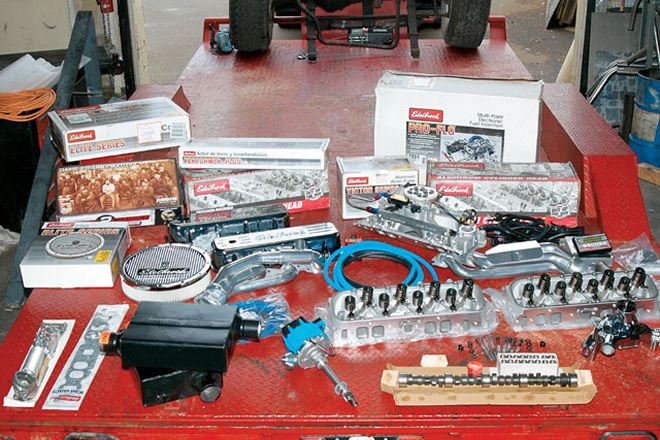
 Jerrod Jones
Former Editor, Off Road
Jerrod Jones
Former Editor, Off Road
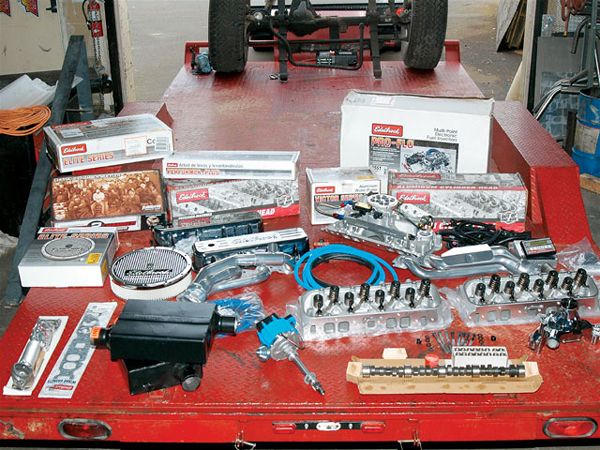
Let's face it: Most of us don't have engine lathes and milling machines in our garage. Heck, we barely have a complete socket set, much less honing machines and other whatzits to machine a motor with. So when it comes to power upgrades, bolt-ons are a nice deal. A crate motor is just about the ultimate in easy bolt-in power, but when's the next time you're going to be able to save $6,000 without it burning a hole in your pocket? We're not good at that either. So when we bought our next Ultimate Adventure truck (the unofficial one), we looked for a Chevy K5 Blazer that had a big-block in it that we could build along the way, replacing pieces as funds for new ones became available. It's a good plan, and an easy way to not break your credit card in half all at once. But you do run the risk of old faulty parts grenading new (just paid for) parts if there's something wrong with some of the reused equipment. Our engine builder, Jack Daniels Arlington of Fabworx Inc., wants us to remind you that the way we tried to do this build (on top of a big-block short-block we had no previous experience with) is extremely risky because you are creating more pressure in the engine with the modified parts. If the bottom end of the engine is on its last legs, bolting on a new set of heads could easily be enough to send an engine to its grave.
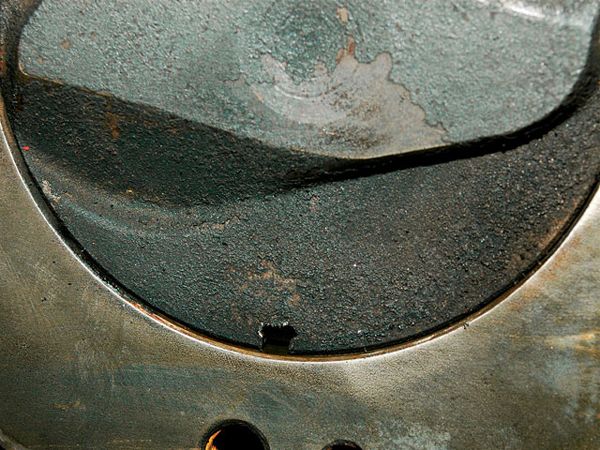
Bolt-on engine upgrades are definitely the way to go for the do-it-yourselfer. You can complete most jobs on a standard Chevy, Ford, or Dodge V-8 in a weekend, and be able to drive your truck back to work on Monday. But before you start doing things that will create more pressure and heat (more power) inside the block, you'll need to check out a few things to make sure that the block you're starting with will handle the boost in power and not waste the brand-new parts you have. First, check your spark plugs for signs of any bad residue on the electrodes, and scope the ignition to make sure there are no glitches. Then, do a compression test. There are standard compression levels (in PSI) for all engines, and a service limit that a gauge should not read below until it needs a rebuild. Also, perform a cylinder leakdown test using the proper equipment to see if your combustion chamber will hold pressure. Lastly, you need to check the vacuum on the engine. A steady pull of 19 pounds should make you feel good, but a wavy and jumpy reading can indicate either a simple misfire or serious valvetrain problems.
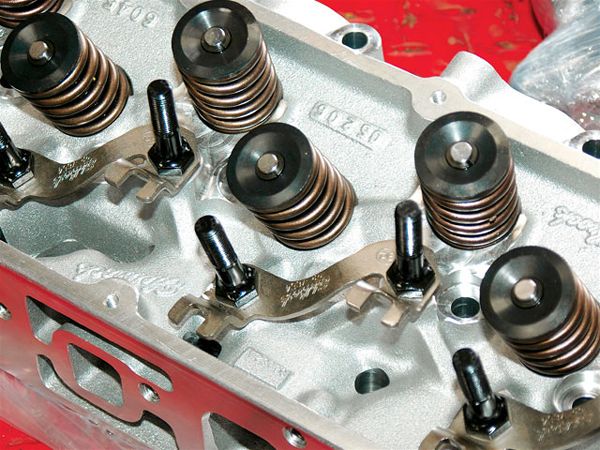
Bolting on a new set of heads is one of the best ways to increase power. Even with stock sized valves and stock ratio rockers, a set of aluminum heads can make some real power improvement thanks to the improved flow through smoothed ports. We used a set of Performer RPM aluminum heads with a 110cc chamber and a 2.19-inch valve size. Complete heads like this one are easy to throw on with a new set of head bolts (always use new head bolts-they're one-time use) torqued to the proper spec (65 lb-ft for the short bolts and 75 lb-ft for the long head bolts on our Edelbrock big-block Chevy aluminum heads), and will handle up to 540 hp.
All head bolts on big-block Chevys (with aftermarket heads or not) go into the water jackets and therefore use GM thread sealant. For any bolts not going into water jackets, use oil like liquid Teflon so you can truly torque the bolts to the right spec.
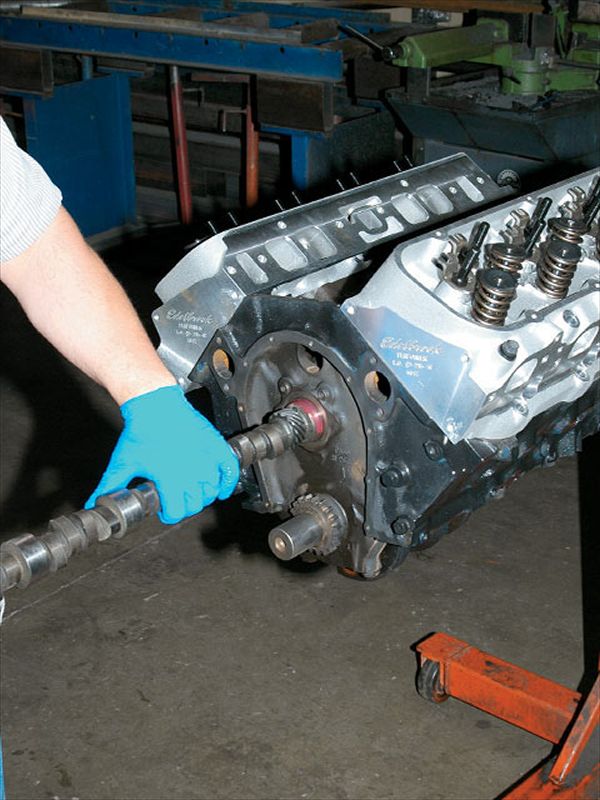
The cam is often referred to as the heart of your engine. It controls and moves all the valves in your engine, allowing air and fuel to enter and exit. There are many aftermarket cams to choose, from super lopy to smooth as stock. The more lopy the cam, the longer the valves stay open. Too lopy a cam (one that makes only one engine revolution per second) can be very hard to keep running at low rpm and give almost no vacuum to power your brake booster. Too smooth of a cam and you won't notice any difference over the stock one. We got a mild Edelbrock Performer Plus cam kit with a 292 intake and 302 exhaust duration. This came with a set of hydraulic lifters and should work well with our new aluminum heads, but still give us enough vacuum to work the brakes.
Some hints: Hydraulic lifters should be soaked in oil because they are hydraulic and not mechanical and therefore will not work right unless carefully checked to make sure they are full of oil. Also, it is very important to use the right engine oil to break in a camshaft so you do not flatten the cam lobes. You need an oil with phosphorus in it like Dello 400. After the initial break-in, any of your preferred engine oils are fine.
Oh, and when you do put in a camshaft, remember to spend the extra few bucks and get a new timing chain since you'll be removing the one you have on now. You might be thinking about going to a geardrive. If so, now is the time, but be aware that geardrives are much noisier than timing chains.
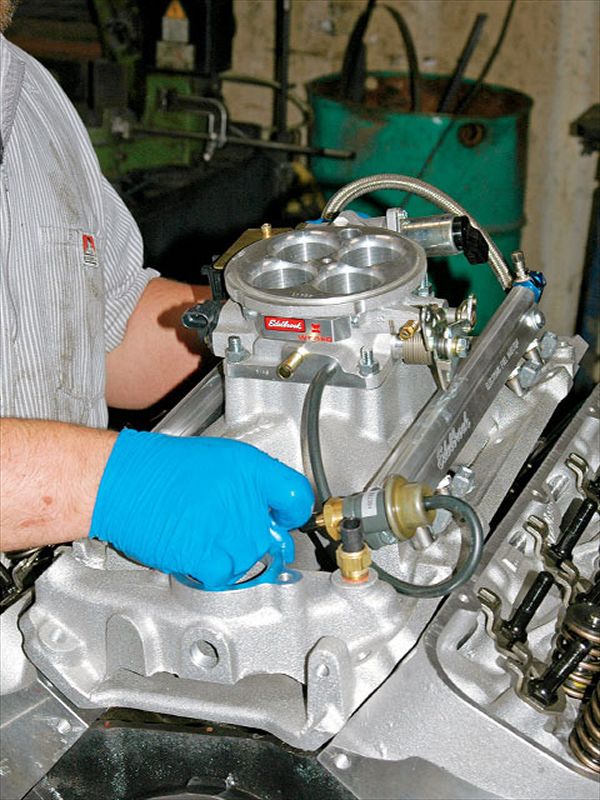
If you can set it up right, we can't think of one instance where you wouldn't benefit from a multiport fuel-injection system. Fuel injection will let your engine run at any angle off-road, plus adjust fuel and air mixtures automatically via a computer that takes multiple readings per millisecond and decides what your optimum mixture may be. Besides that, a multiport fuel-injection system squirts fuel right outside the intake valve of each cylinder, instead of fuel having to travel through the intake manifold such as on a carbureted or throttle-body fuel-injected engine. It is simply a more efficient design, though it requires much more costly components. A single injector will cost upwards of $50 if it goes bad. You could rebuild an entire carburetor for only $100.
But the gains from a system like this Performer Pro-Flo Electronic Fuel Injection will net you more than just more power and reliability. This Edelbrock unit comes with an onboard Calibration Module that you can tune, without a laptop, from inside your truck. Welcome to the 21st century.
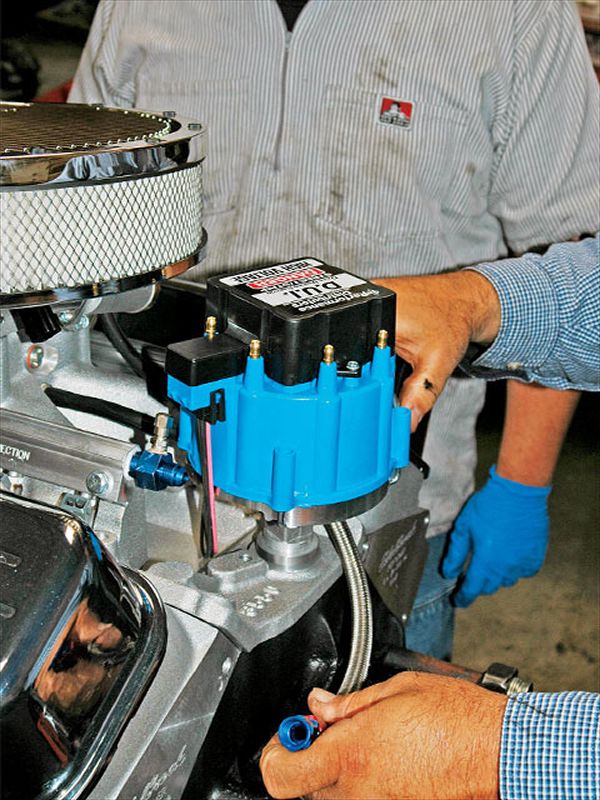
If you're going to be dumping money into the mechanicals of the engine, remember the electrical system. A high-voltage distributor like this D.U.I. unit from Performance Distributors can really make spark duty a no-brainer on your big-block. And the better the spark, the more complete the burn of the fuel in your combustion chamber. The D.U.I. distributors are simple and smart all-in-one units with coils built onto the cap, and a one-wire hookup that guarantees it will be one of the easiest mods you'll ever make.
And don't forget to upgrade from that cheesy 50-amp alternator to a high-output unit like this one-wire Mr. Amp alternator from Performance Distributors. It will run your vehicle at 65 amps upon idle and 130 amps at peak output, and will allow a much more demanding and up-to-date electrical system to be powered.
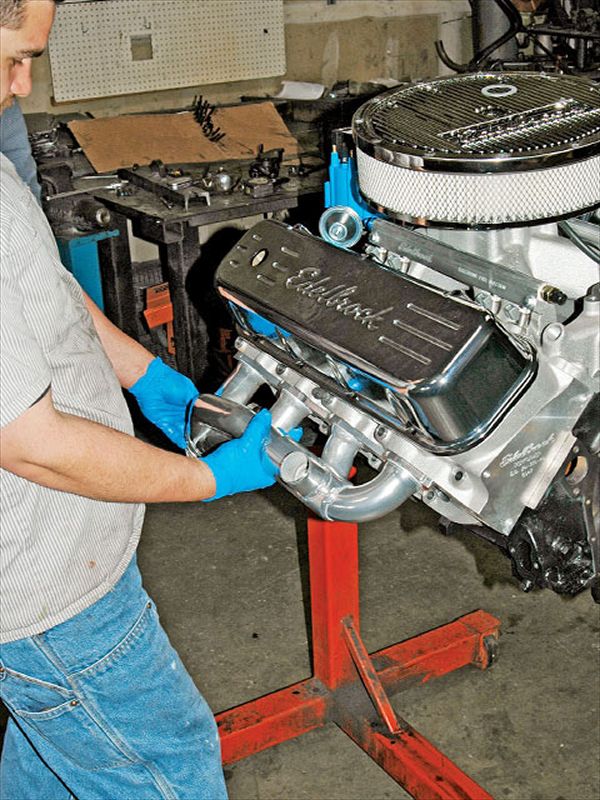
As far as engine upgrades go, the first few popular ones are probably the best ones you could start with. Increase the size of your exhaust, put headers on, and get a high-flow air element. The easier your engine inhales and exhales, the more power you'll make and better mileage you'll get. An air cleaner like the Elite Series unit on top of the engine will let you suck in lots of fresh air, without doing it through a straw. These Edelbrock ceramic-coated Chevy big-block exhaust manifolds allow the engine to move a lot of air out without much restriction, and also keep a lot of the exhaust heat out of the engine compartment and trapped within the headers.
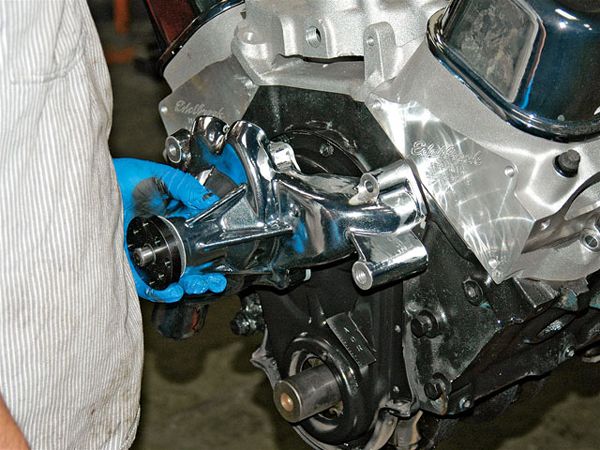
Once you bolt on a bunch more horsepower and torque, you'll have to remember that you'll be raising the pressure and temperature inside the engine. This will require improved heat venting to make sure that you don't overwhelm the cooling system. Besides a bigger radiator, you should look into a new water pump. A high-performance unit like this Edelbrock big-block water pump with a Permastar coating can really increase your high-rpm flow rate. Above 3,000 rpm these Edelbrock water pumps are known for pushing considerably more water than comparable units. Another nice feature about these Edelbrock units is that they provide an equal distribution to both sides of the engine.


